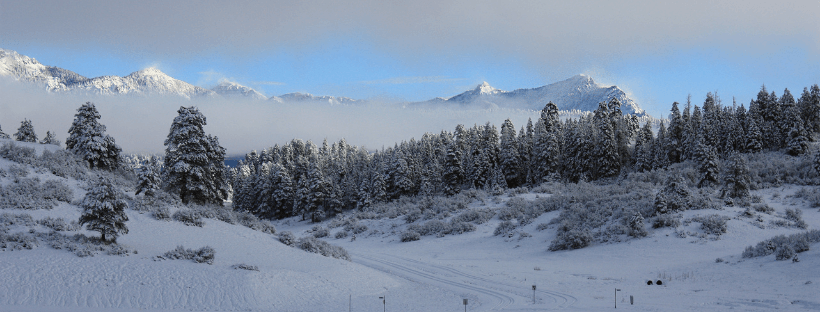Seasonality of safari tours: when to travel?
 The most favorable countries for European tourists in Africa are located in the southern part of the continent. This is a different hemisphere, so we always have to remind ourselves: when we have summer, they have winter. Sometimes it even snows in July in South Africa.
The most favorable countries for European tourists in Africa are located in the southern part of the continent. This is a different hemisphere, so we always have to remind ourselves: when we have summer, they have winter. Sometimes it even snows in July in South Africa.
But in general, the characteristics of summer and winter are different for Europe and Africa. The European antithesis is “cold-warm”, African “dry-wet”. It is this moment that must be taken into account when deciding when to go on a safari to Africa.
Lack or excess of moisture in the most direct way affects the behavior of animals.
So the safari season is very important! Especially considering that a trip to Africa is not cheap, and every traveler wants to see the most interesting things for his money. Aves Travel, guided by the experience and feedback of its clients, recommends adhering to the seasonality when planning the time of African tours.
What is high safari season?
High season itself means the same as always – the most favorable time for a trip. In the case of safari, it is winter, dry season. And also its beginning and end. At this time, dirt roads – and these are the ones that permeate the reserves, asphalt cannot be laid there – become passable for jeeps. And the animals leave their secluded fed pastures and peaceful lairs, going either after the rains or to the watering holes.
At this time, it is easier to see predators who “do not like to show themselves to people,” and hoofed animals and flocking birds gather in large groups, presenting amazing and rare beauty spectacles.
The best safari season varies slightly from country to country. The difference can be insignificant, and can go up to several weeks. But there are general rules. The rainy season – “low” – is preferred for travelers who want to get acquainted with the cultural and historical sites of Africa. At this time, prices for flights and hotels are significantly reduced.
But if your goal is an interesting safari, you will have to come to terms with the prices of the high season. You can save a little through early booking, various promotions or extreme seasonal points (when the high season is “just about to start” or “almost over”). Participants of the Aves Travel tours, who have already traveled to Africa and were satisfied with the result, share their observations with us. Based on these, we recommend you the next months for your African travel.
Safari season in South Africa
The best time to observe animals in the Kruger Park and most private reserves is from May to August. The grass has not yet risen, and the animals that are deservedly considered “masters of disguise” are easier to spot.
From June to October, it is good to watch whales on the coast of South Africa. Striped, smooth, humpback whales come here for the mating season. The likelihood of seeing not only the fountain or the tail, but the entire giant is quite high.
November-March is the South African summer. It’s very hot in Durban, hot and rainy in Johannesburg and Pretoria, and Cape Town and the ocean coasts have perfect beach weather. If you are not intimidated by the high prices and the abundance of tourists, the New Year in South Africa can be a great idea! However, for combined tours, including safaris and sightseeing of the main attractions, Aves Travel recommends choosing November and February-March.
Safari season in Tanzania
In principle, you can travel to Tanzania all year round. Ngorongoro National Park has the highest “population density” of the animal world, so you will definitely see at least someone interesting. But the dry season (June to October) is considered the most favorable. Moreover, the migration of animals in Africa – one of the most magnificent spectacles – is available for observation during this period.
In central Tanzania, the beginning of migration can be seen in December and early January. This is a very short season, since by the end of January, ungulates have calves and herds move to areas inaccessible for observation.
There are two rainy seasons in Tanzania. One starts at the end of March and lasts until the end of May. The second is at the end of October and ends in early to mid-December. The second is not so “harsh”: there are no round-the-clock showers. There are even sunny days.
Oddly enough, the rainy seasons have their advantages: there is no dust and the greenery is brighter, fewer tourists and prices for luxury hotels, meals, and guide services are sharply reduced. The main disadvantage is that it is impossible to get to the remote corners of the national parks. But even in the high season, such trips are rarely made due to their duration and extreme high cost.
Aves Travel recommends its clients to choose the combined tours “Safari in mainland Tanzania + beach vacation on the island. Zanzibar”. Safari is a specific and “difficult” vacation. Morning trips start in the dark and involve long hours in the car. After the safari, it is very pleasant and useful to spend a week on the white beaches of Zanzibar, in complete relaxation.
Safari season in Kenya
Everything that has been said about Tanzania also applies to Kenya – neighboring countries and very similar in climate / fauna.



